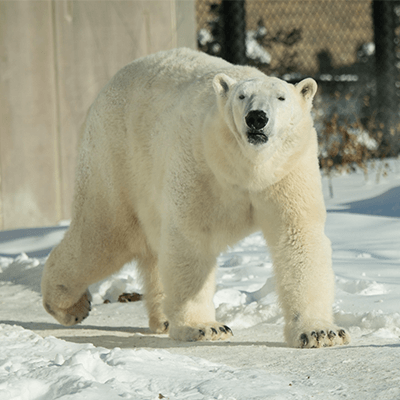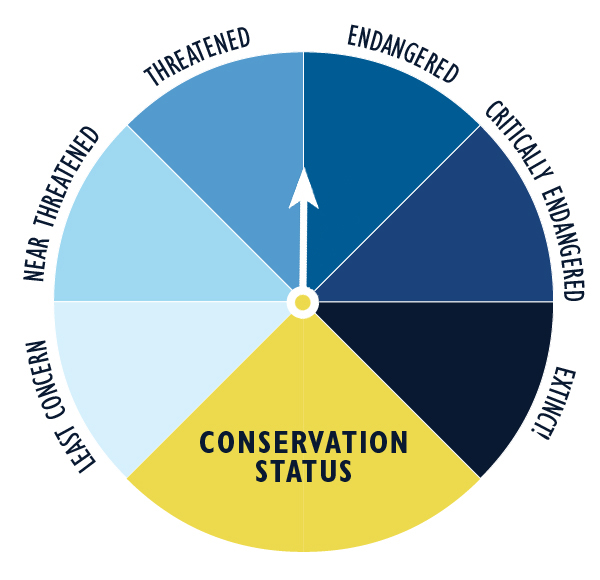
About Polar Bear
The polar bear is the largest living land carnivore. The polar bear’s species name Ursus maritimus means maritime, or relating to the sea. Recent findings suggest that polar bears evolved from a common ancestor of the brown bear between 350,000 and 6 million years ago. The polar bear’s ancestors went through a series of evolutionary changes in order to survive in the Arctic.
Henry Vilas Zoo partners with Polar Bears International to help raise funds and awareness to save the wild polar bears and the sea ice they depend on. Find out more about PBI here.
Habitat
Home is on the sea ice and where the seals are. The polar bears home range is far larger than any other species of bear. They live throughout the Arctic in Canada, Norway, Russia, Greenland, and parts of the US.
Diet
They mainly eat seal BLUBBER, depending on the high-fat content, and can eat 100 pounds of seal blubber in one sitting! Polar bears can detect prey nearly half a mile away (1 km) and up to 3.2 ft (1 meter) under snow due to their incredible sense of smell.
Family Life
Mating happens in the spring as the snow starts to melt. Pregnant females will build a maternity den, like a small snow cave, and wait for the snow to close the entrance. Here she’ll birth and nurse her young in the winter until spring. During her entire time in the den, four to eight months, the mother doesn’t eat or drink.
Conservation Status
The conservation status of the Polar Bear is classified as vulnerable.
Threats
- One of the largest threats to the polar bear population is the large-scale ecological changes to their surrounding environment caused by climate change. By impacting their habitat, climate change adversely affects the polar bear’s ability to hunt, as well as hinder their denning activity.
- Other threats to the polar bear include pollution, poaching, and disturbances from industrial activities.
Facts about Polar Bear
Class:
Mammalia (mammals)Order:
Carnivora (carnivore)Family:
Ursidae (bears)Genus:
Ursus (black bears, brown bears, and polar bears)Species:
Ursus maritimus (polar bear)Life Span:
30 years (wild) / 38 years (zoo)Size:
Male: 6 – 8.2 feet long (1.8 – 2.5 m) / female: 6 – 6.5 feet long (1.8 – 2 m)Weight:
Male: 660 – 1,760 pounds (299 – 798 kgs) / female: 330 – 660 pounds (150 – 300 kgs)
Fun Facts
- Why don’t they slip on the ice!? The soles of the feet act like suction cups and their claws act like ice-picks so they can easily walk on ice.
- Groups of polar bears are called stocks.
- Just like humans, most polar bears sleep for seven to eight hours at a stretch—and they take naps, too.